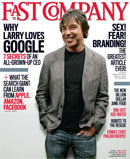
Since the elections in November, newly elected Republican governors have been falling over themselves to return federal funding earmarked for high-speed rail. Their rationale is that once the rail project is built, the state will be the one bearing the operating cost while the trains lose money because no one is riding them. A new report says that this strategy is going to backfire: High-speed rail can be a huge driver of jobs and economic growth, and the government has already committed to at least $10 billion worth of spending, with plans for tens of billions more in the coming years.
The report, "The Case for Business Investment in High-Speed and Intercity Passenger Rail" (PDF) by the American Public Transportation Association finds that in addition to the obvious, but temporary, construction jobs, the benefits ripple out throughout an economy. Most importantly, for each $1 billion spent on train construction, 24,000 permanent jobs are created. That's a mere $41,667 per job, which looks downright cheap when you're staring down 9% unemployment.
The California High-Speed Rail Authority estimates that building a high-speed rail link between L.A. and San Francisco would result in 600,000 construction jobs and 450,000 permanent new jobs. There are currently 2.2 million unemployed people in the state; high-speed rail would halve its unemployment rate. Here is how high-speed rail would affect some major American cities, to the tune of billions of dollars in economic growth and new wages:

The concern with high-speed rail, as explained by the governors in states like Wisconsinand Florida is that no one will ride it. And while rail ridership is at an all-time high, it's a fair worry. Amtrak has trouble making ends meet. But what they're forgetting is that people don't want to ride trains not because they hate trains, but because trains aren't that fast. If you make the trains faster, people will ride them. Here is what happened in Europe when they added high-speed rail:

Shocking, yes, but if you spend the money to make the train more convenient, more people will pay to ride on it! And its not as if we really need to push that hard. In the crowded Northeast Corridor (the perfect place for high-speed rail), 62% of the people choosing between taking a train or a plane from Washington, D.C. to New York pick the train, as do 47% of Boston to New York travelers. And the people who choose the train instead of driving would decrease wear on the roads, resulting in $270 billion in road repair savings by 2050. That pays for the trains right there. And lest we forget the environmental benefits, remember, trains are the most efficient mode of passenger movement, especially high-speed ones:

Better for the bottom line, better for the environment. Plus, you're not stuck in traffic and your friendly TSA agent doesn't have to touch you in your special place before you get on.
Follow Fast Company on Twitter. Morgan Clendaniel can be reached by email or onTwitter.
[Photo by Flickr user danielfoster437]
Best regards


 Digg
Digg StumbleUpon
StumbleUpon Facebook
Facebook Twitter
Twitter LinkedIn
LinkedIn
No comments:
Post a Comment